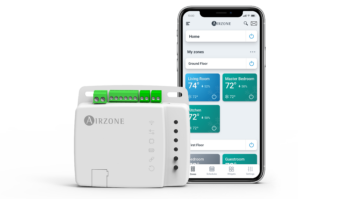LAS VEGAS — Mobile broadband,
the 4G rollout, smartphones,
and emerging devices
such as cellular-embedded netbooks
and health-care appliances
dominated the developments
at CTIA Wireless 2010, where
show producer CTIA trumpeted
America’s domination of the global
mobile-broadband market.
The association warned, however,
that wireless-data demand
is growing so rapidly that the
U.S. could lose its mobile-broadband
leadership if it doesn’t continue
investing in new capacityexpanding
technologies, if the
federal government
adopts stif
ling regulations
that deter investment,
and if the
Federal Communication
Commission
(FCC)
doesn’t provide
more wirelessdata
spectrum
than the 500MHz that it has already
promised.
To underscore what CTIA
chairman and AT&T Mobility
president Ralph de la Vega
called America’s “clear leadership
in mobile broadband by just about any measure,” carriers and handset
vendors at the show announced the industry’s
first 3G/4G phones, new smartphones
that double as e-readers, more
smartphones with HD-video capture and
embedded mobile Wi-Fi hot spot, new 3Gequipped
mobile-computing devices, and
3G- and 4G-network expansion plans.
LG Electronics
also showed prototypes
of three cellphones with built-in
Mobile ATSC DTV tuners.
Among the show data developments
was the announcement of T-Mobile’s
first 3G-embedded netbook and a timetable
for adding faster HSPA+ wirelessdata
technology to its 3G footprint.
Mobile WiMAX operator
Clearwire
revealed the names of the next cities that
will get commercial 4G service as it expands
its network to 120 million people
by year’s end.
Sprint
demonstrated the HTC-made
CTIA
continued from page 1
3G/4G Evo smartphone, which features
the latest Android 2.1 OS.
For its part,
Samsung
announced the
first U.S.-market 3G/4G cellphone to
use Long Term Evolution (LTE) 4G
technology. Samsung also said it plans a
summertime U.S. launch of an Android
2.1 smartphone, the Galaxy S, with ability
to download movies and TV shows as
well as books and periodicals.
In addition,
HTC
showed the previously
announced HTC-made HD2 Windows
Mobile 6.5 smartphone, available
from T-Mobile with movie downloading
via Wi-Fi, e-book downloading, and embedded
Wi-Fi hot spot.
In other carrier announcements,
AT&T
announced plans to offer Palm’s
WebOS-based Pre Plus and Pixi Plus as
well as Dell’s first U.S. smartphone, the
Android-based Aero, formerly called the
Mini 3, and
Verizon Wireless
certified
multiple mobile computing devices and a
hybrid cellphone/cordless desktop phone
for use on its 3G network.
Even before the new data-centric product
and network plans become reality, data
accounted for almost 29 percent of carrier
revenues in 2009, CTIA announced.
Other metrics cited by AT&T’s de la
Vega at the show further underscored
the centrality of data to carrier’s marketing
strategies now that cellphone penetration
reached 90 percent of the U.S. population
at the end of 2009 and will rise to
105 percent by the end of 2013, according
to market research company Informa.
Although the U.S. is home to only 7
percent of the world’s wireless customers,
de la Vega said during a keynote address,
the U.S. accounts for about 33 percent of
3G customers, defined as using HSPA
and CDMA 1x EV-DO products.
The U.S. also has more Wi-Fi hot
spots than any other nation, with 70,000;
U.S. smartphone sales of 53 million in
2010 will be twice that of the country
with the second highest unit volume, and
U.S. carriers’ capital expenditures on mobile
broadband currently exceed that of
any other country or region, he said.
U.S. carriers’ could cede their world
leadership in wireless data, however, unless
they continue to work aggressively to
meet growing data demand, he told showgoers.
To do so, carriers need 800MHz of
new spectrum, not the 500MHz promised
by the FCC over 10 years.
And because it will take time for new
spectrum to come online, carriers must
continue to invest in such capacity-expanding
4G technologies as LTE, use
Wi-Fi and in-home femtocells to reroute
some data traffic onto landline broadband
networks, and work with applications developers
to ensure their applications are
as spectrum-efficient as possible.
The ability of U.S. carriers to maintain
their data leadership in the world is
by no means a certainty, AT&T chairman
Randall Stephenson told the industry
during his keynote. Private investment
to expand data capacity “will not
flourish if well-intentioned but generally
stifling regulation” is imposed by regulators,
he warned.











